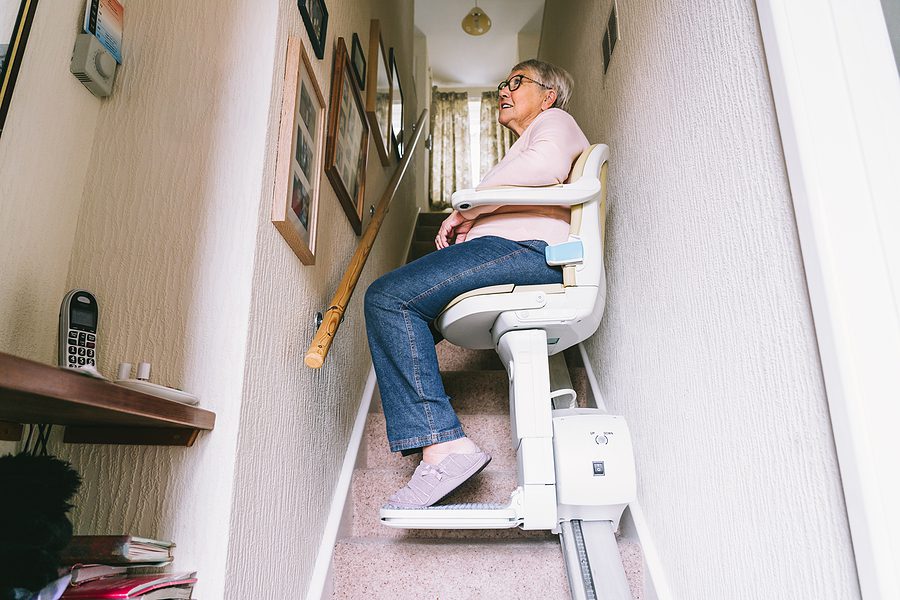For families of the elderly, fall prevention is always something to keep in mind for your loved one. Falling can cause anything from minor issues to a major risk of injury or death in the elderly. Even a minor fall within the home can potentially lead to serious injury or hospitalization. Some seniors may never fully recover from a fall injury. Because of this, we put together 6 steps for fall prevention in your loved one’s home.
Talk with Your Loved One About Fall Prevention
As your loved one ages, they may be at a greater risk of falling. However, many elderly individuals will be headstrong about changes to help with fall prevention until after their first fall. Unfortunately, their first fall can do significant damage. Because of this, having the conversation as early as possible is essential to their safety. Additionally, consider speaking with their doctors about possible medication side effects that can increase fall risks. Some medications can affect balance, judgment, and more.
Fall Prevention in the Bathroom
Bathrooms are the most common area of falls for seniors. Slippery tubs and wet conditions can increase the risk of falls. Additionally, tile floors and porcelain appliances can create a further risk of injury when your loved one falls. Installing grab bars can go a long way in fall prevention. Grab bars can be helpful in and around the shower, as well as by the toilet. Additionally, the shower should be equipped with a shower seat or bench. Anti-slip pads in the shower can help increase safety. A hand-held showerhead along with a shower seat can help ensure good hygiene while reducing fall risks. Lastly, consider installing a raised toilet seat. Raised toilet seats help limit falls by reducing the distance between the standing and sitting positions.
Fall Prevention on Staircases
After the bathroom, staircases pose a great risk to your loved one. If they live in a multi-level home, help reduce the need for them to go up and down the stairs throughout the day. This may include moving essential items or even furniture to one main floor, when possible. This may include moving their bedroom to a lower floor. If this is not possible for them, consider installing a stair lift. At the very least, the staircase should have a sturdy railing for them to hold while ascending and descending.
Exercise to Reduce Fall Risks
Exercise is an important part of fall prevention. If your elderly loved one can exercise to maintain or even strengthen themselves, they should. Overall, balance and strength training is vital. Help your loved one improve their range of motion for fall prevention. Chair yoga, Tai Chi, or simple stretching exercises can help improve their muscle tone.
Home Footwear and Fall Prevention
The right footwear can make all the difference. In-home footwear can help provide traction and support. Generally, comfortable shoes that allow for toe flexibility are best. If your loved one is walking around in socks or floppy slippers, they may be contributing to their risk of injury.
Home Safety Walkthrough
There are potential falling hazards all over your loved one’s home. Area rugs, crowded pathways, clutter, and more can lead to falling. Tuck wires behind furniture and appliances to minimize the risk of tripping. Bring essential items to shelves that are more easily accessible by your loved one. This reduces the need to bend down or climb up to get things. Additionally, nightlights should be used to help your loved one safely go to the bathroom at night.
Safe Harbor Healthcare Services does not provide medical, healthcare, or financial advice via articles. This material has been prepared for informational purposes only. It is not intended to provide, and should not be relied on for medical advice.
Safe Harbor Healthcare Services has been providing excellent home care on Staten Island since 1967. Our services help the elderly and disabled live safely and independently; while giving their families the peace of mind they need. For more information contact us by clicking here, or by calling (718)-979-6900.

